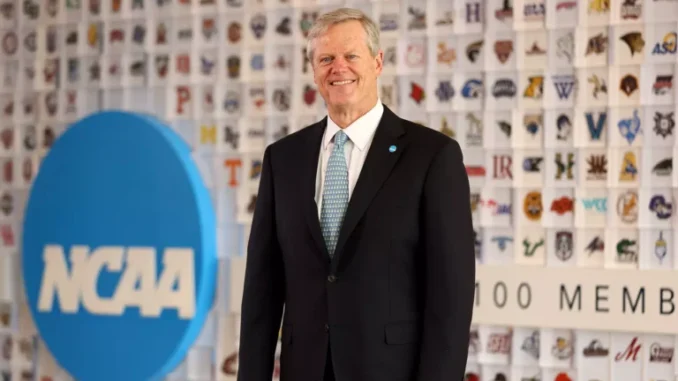
Indianapolis, IN – NCAA Commissioner Charlie Baker delivered an address to college football teams this week that has sent shockwaves across the collegiate sports landscape, leaving many programs reeling and prompting immediate re-evaluation of future strategies. While the full extent of Baker’s pronouncements is still being digested, initial reactions suggest a fundamental shift in the NCAA’s approach to governance, particularly concerning financial models, roster management, and perhaps most surprisingly, the future of competitive balance. The Oklahoma Sooners, in particular, found themselves at the epicenter of these seismic revelations, with implications that could redefine their highly anticipated move to the SEC.
Commissioner Baker’s address, delivered with an air of decisive authority, reportedly focused on a multifaceted plan to stabilize college athletics amidst ongoing legal challenges and the evolving landscape of Name, Image, and Likeness (NIL) compensation. Sources within various athletic departments indicate that Baker unveiled a more robust framework for revenue sharing directly with student-athletes, going beyond the current patchwork of NIL deals. This move, while anticipated in some form given the pending House settlement, appears to carry significant financial obligations for institutions, potentially impacting operational budgets and resource allocation.
For the Oklahoma Sooners, who are set to join the Southeastern Conference (SEC) in the coming year, the timing of this announcement could not be more critical. The SEC, already a financial powerhouse, is expected to embrace these new models with aggressive strategies to maintain its competitive edge. However, the sheer scale of the financial commitment hinted at by Baker, coupled with potential roster limitations and unprecedented regulatory oversight, has reportedly caused immediate concern within the Sooners’ athletic administration.
One of the most jarring aspects of Baker’s address, according to numerous coaches and athletic directors, was the emphasis on a potential cap on team rosters and an overhaul of scholarship limits, a move that could fundamentally alter recruiting strategies and player development. For years, major programs like Oklahoma have relied on large rosters to build depth and manage injuries over the grueling college football season. A significant reduction could force difficult decisions regarding player retention and talent acquisition.
Furthermore, reports suggest Baker outlined a more direct role for the NCAA in overseeing NIL activities, potentially establishing a centralized clearinghouse and a clearer set of guidelines. This would be a stark departure from the largely unregulated environment that has defined NIL since its inception, and while it might bring much-needed clarity, it also signals a potential loss of autonomy for individual programs and booster collectives. The Sooners, like many top-tier programs, have been active in the NIL space, and any new restrictions or reporting requirements could force a significant recalibration of their approach.
The competitive implications are perhaps the most unsettling for a program like Oklahoma, which is transitioning to the toughest conference in college football. The SEC is known for its deep talent pools and fierce rivalries. Any changes that limit roster sizes or introduce new financial constraints could impact the Sooners’ ability to compete immediately within their new conference. Questions are now swirling about how these new NCAA mandates will be enforced, and what the penalties will be for non-compliance. The specter of antitrust lawsuits continues to loom, suggesting that even these new “solutions” might face legal challenges down the road.
While the full transcript and detailed implementation plan of Commissioner Baker’s address are eagerly awaited, the initial reactions from across the NCAA football landscape paint a picture of apprehension and uncertainty. For the Oklahoma Sooners, their highly anticipated SEC debut just became even more complex, as they navigate not only the challenges of a new conference but also a radically altered NCAA landscape. The college football world is holding its breath, awaiting further clarification on what promises to be a transformative era for the sport.
Leave a Reply